Heather N. Kolich, ANR Agent, UGA Extension Forsyth County
Walking down to the compost pile the other day, I noticed a line of dark spots on the ground. From my lofty five-foot height, they looked like tiny balls of fertilizer granules or little mounds of excavated earth – except they were the wrong color.
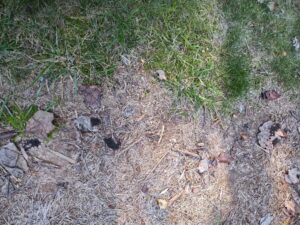
I found a stick and scooped up some of the dark stuff for a closer look. To my surprise, the dark spots were piles of dead ants. Hundreds of ant corpses were neatly clustered on leaves and heaped into discrete spots on the bare ground. This was a mystery I had to explore.
Ants have been around for roughly 168 million years. Currently numbered at more than 17,000 species, ants are the most abundant terrestrial creature and are present on all continents except Antarctica. Their activities provide several ecological services. Their tunneling behavior aerates soil. As they scavenge dead leaves and carrion, ants clear away debris and recycle nutrients for soil fertility. They carry seeds to new places, aiding in the spread of plant life. Ants prey on other insects, including pests like termites, ticks, and plant-eating arthropods, providing population control.
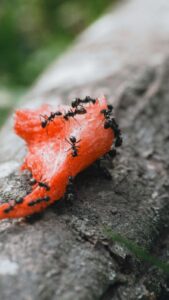
Like other colony-dwelling insects, ants perform different jobs in support of the community. Young ants care for the queen and nurture larvae, important responsibilities performed within the safety of the nest. As they mature, ants move into riskier career paths, such as forging for food and guarding the colony’s territory. It turns out that one of the careers is serving as undertakers who remove the dead from the nest.
Bringing out the dead is a practice called necrophoresis. Literally, the word originates from Greek and means transport the dead. Literarily, Robert Frost commemorated the behavior – without the fancy word – in his 1936, tongue in cheek poem “Departmental,” which I remember from high school.
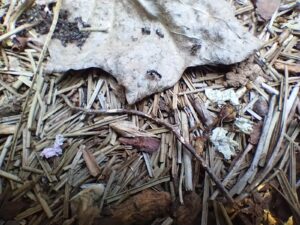
Removing dead colony mates is a health measure to prevent the spread of disease and pathogens within the nest. In ants, it’s also a social behavior. Undertaker ants carry the corpses and drop them outside the nest. But they don’t drop them just anywhere.
Through direct communication – antennae touching as they pass other workers – and indirect communication, which might include some trace pheromone lingering in the environment, ants coordinate their mortician tasks. At the outset of housecleaning, groups of undertakers make separate cemeteries. As the task continues, however, and interactions with worker mates increase, certain cemeteries get more deposits of dead bodies. Myrmecologists, or researchers who study ants, have observed a correlation between the density of corpses in a pile and the likelihood of an undertaker depositing its burden in that pile. The researchers have even observed the disappearance of smaller middens as larger ones expand.
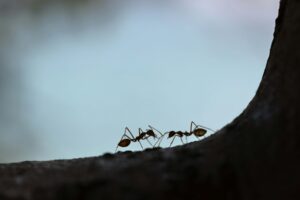
A few days later, I checked the area to see if the cemeteries were still there. They were, and undertaker ants were still carrying corpses to them.
What caused the mass mortality? I’ll never know. Five weeks of dry, hot weather could have been a factor. Desiccation and heat might have disrupted the foraging behaviors or abilities of the colony, resulting in high mortality. Ants are also territorial and will fight to the death against invaders. A scarcity of water and food could have influenced a colony to move to better digs, resulting in an ant war. Or perhaps in a colony of millions of ants, hundreds of daily deaths are normal.
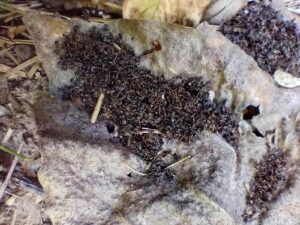
One lingering question remains. If ants routinely clean debris from our environment, what will clean up debris that ants reject?